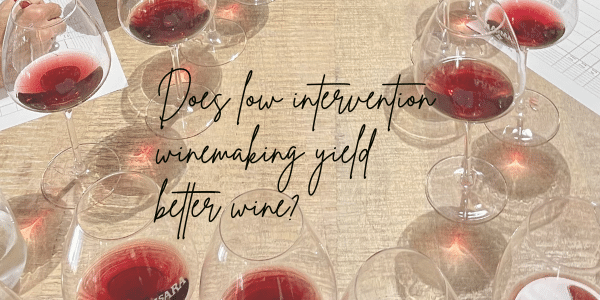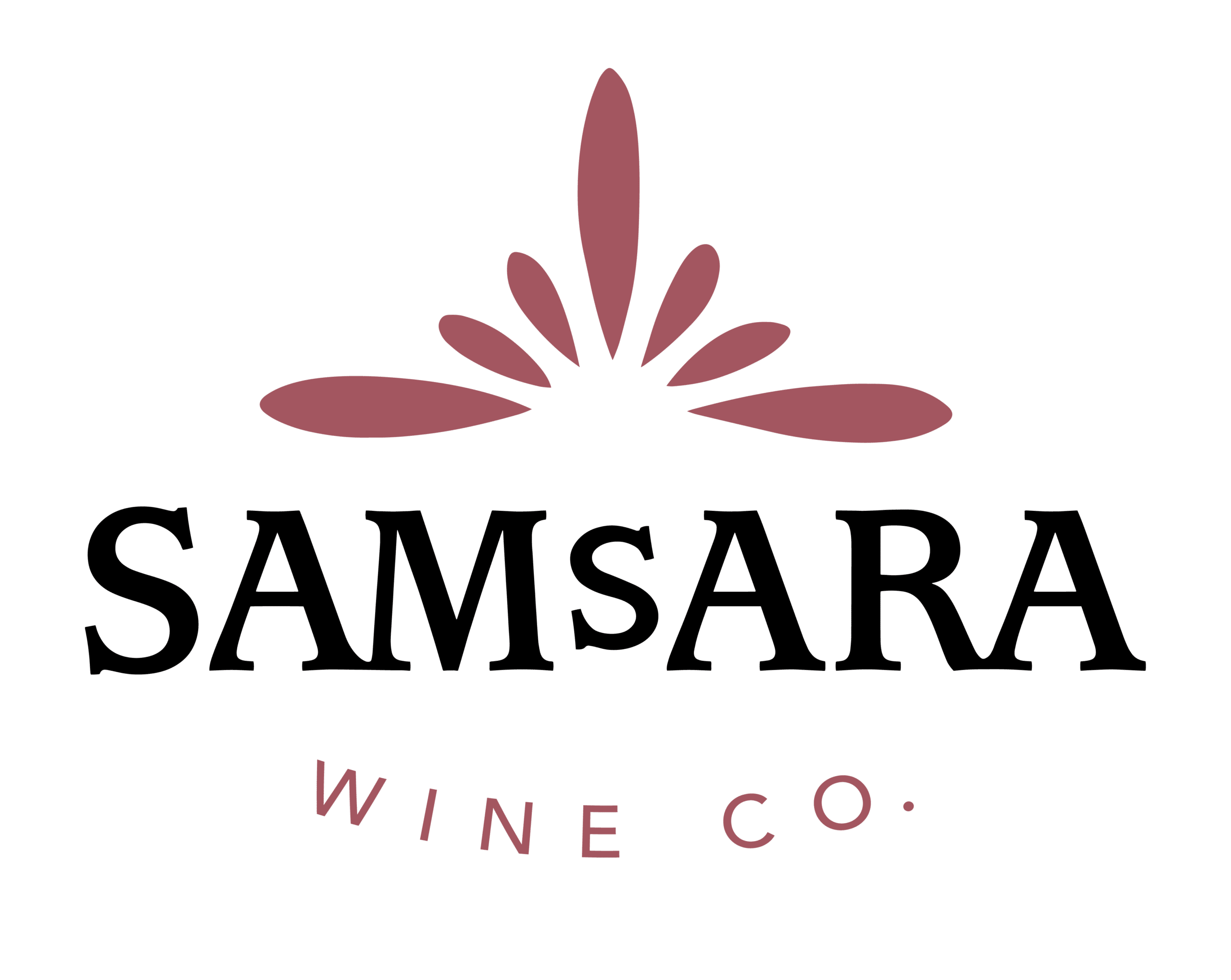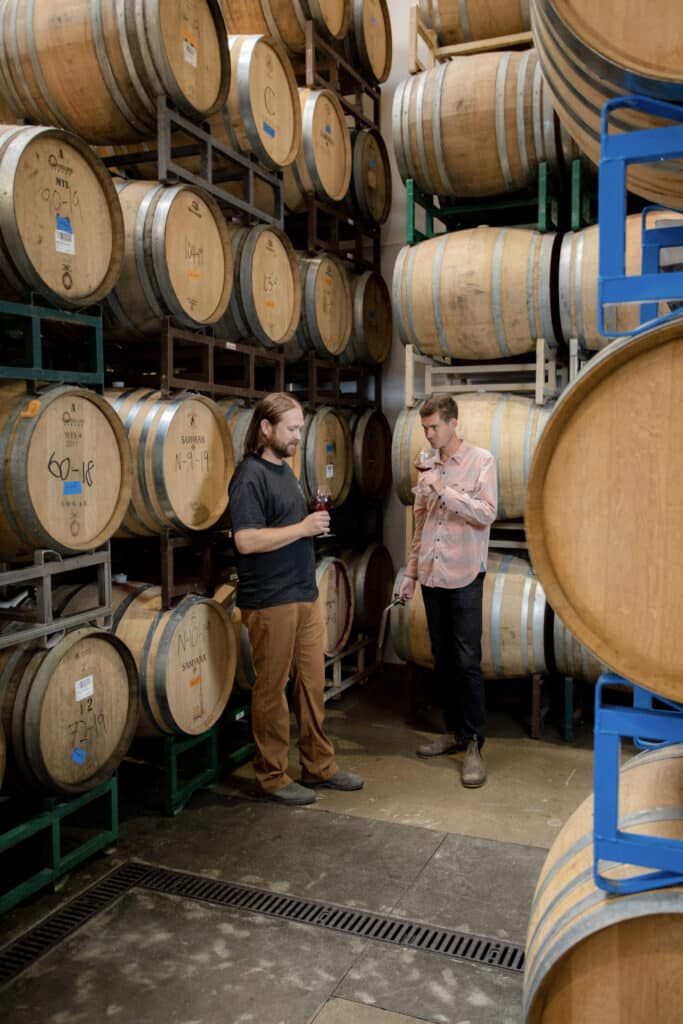No products in the cart.
Does Low Intervention Winemaking Yield Better Wine?

In our minds, low intervention winemaking absolutely yields better wine and there are a number of reasons why.
Movement
We are very conscious of how much our wines “move” while they’re in our cellar. Minimal “racking” (moving wine from one vessel to another) has a number of benefits.
- Minimal movement limits the wine’s exposure to oxygen. Oxygen = oxidation, which is no bueno.
- Minimal movement keeps wine “on the lees” (deposits of dead or residual yeast and other particles that “fall out” of the wine), a natural, protective antioxidant
- Minimal movement does not risk disturbance of the delicate microbiological processes that are taking place in this “living liquid”.
Additionally, when we do have to move wine from one vessel to another (from tank to barrel, barrel to barrel, or barrel to tank) we either use gravity power or a low pressure inert gas (nitrogen) to move the wine. It may seem like a small thing, but moving wine by mechanical means (a pump) introduces pressure, turbulence, and friction to the wine that is, in a word, disruptive.
Native Yeast
Another low intervention winemaking method that has huge wine quality benefits is using only native or indigenous yeast that comes in on the grape skins. The use of native yeast yields longer, slower fermentations which allows for deeper, more complete fruit extraction. Unlike with the use of commercial yeast, there is no single dominant native yeast strain, but instead dozens of yeasts that compete until one becomes dominant during the course of the fermentation. Not only are complex ecosystems like this more stable, but they allow mother nature’s unique blend of yeasts to convey another element of terroir (microbial) and maximize complexity of flavors.




